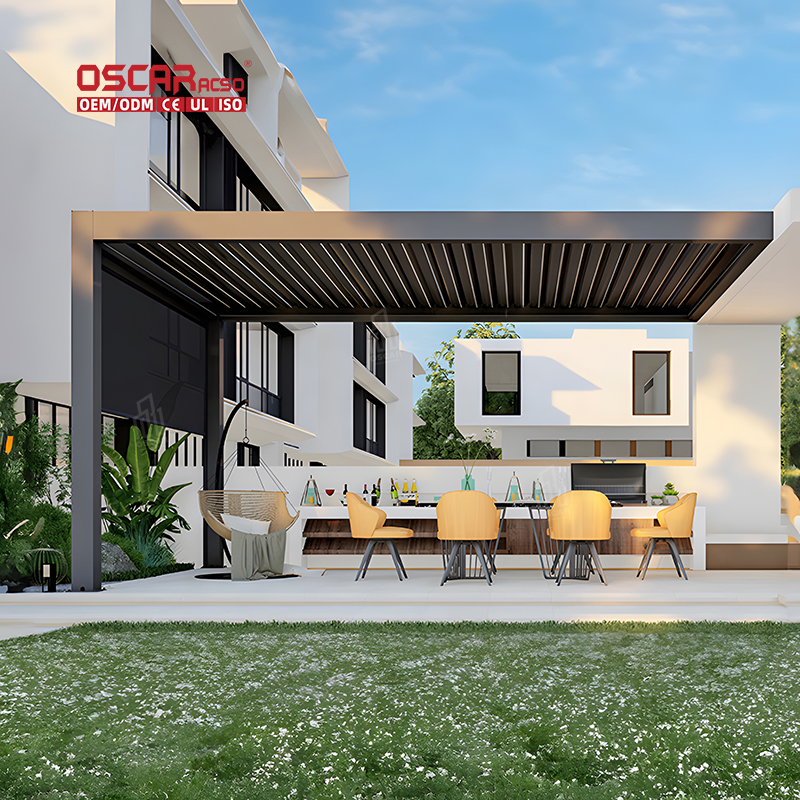Hurricane-Proof Pergolas, Can They Really Weather the Storm?
Imagine enjoying your outdoor oasis, only to have it threatened by an approaching hurricane 🌪️. The question isn\'t just ...

Imagine enjoying your outdoor oasis, only to have it threatened by an approaching hurricane 🌪️. The question isn’t just about comfort—it’s about safety and investment. While no structure is 100% “hurricane-proof,” certain pergolas are engineered to withstand extreme wind forces and protect your home. Understanding how they achieve this can help you make an informed decision for your property.
🤔 What Does “Hurricane-Proof” Really Mean?
The term “hurricane-proof” can be misleading. A more accurate description is ”hurricane-rated” or ”high-wind resistant.” These pergolas are specifically designed to meet rigorous engineering standards that allow them to survive winds associated with major storms, often exceeding 130 mph. This involves a combination of robust materials, smart design, and professional installation to ensure structural integrity during a weather event.
.jpg)
🛠️ Engineering and Design: The Heart of Storm Resistance
The ability of a pergola to withstand hurricane-force winds isn’t accidental; it’s a result of meticulous engineering and design choices.
- •
Aerodynamic Design: The best hurricane-rated pergolas are designed to allow wind to pass through rather than creating a solid barrier. Louvered roofs can be angled to minimize wind resistance, significantly reducing the stress on the structure.
- •
The Power of Materials: Not all materials are created equal. Aluminum pergolas are often the top choice for hurricane-prone areas due to their ideal blend of strength, durability, and resistance to corrosion. High-quality aluminum structures can be rated for winds over 130 mph. While wood pergolas can offer some resistance (typically 50-70 mph), they are generally less durable over time in harsh, wet conditions.
- •
Solid Foundations and Anchoring: A pergola is only as strong as its connection to the ground. Deep concrete footings and heavy-duty anchors are non-negotiable for hurricane resistance. These elements prevent the structure from uplifting or shifting during powerful gusts.
💡 Smart Features for Storm Season
Modern hurricane-rated pergolas often come with integrated technologies that enhance their functionality and safety during storms.
- •
Adjustable Louvers: These allow you to control the roof’s angle. During high winds, opening them to about 45 degrees lets wind flow through, drastically reducing the risk of damage.
- •
Automated Sensors: Some advanced systems include wind sensors that can automatically adjust the louvers when wind speeds reach a dangerous level, providing protection even if you’re not home.
⚠️ What Won’t Work in a Hurricane?
It’s crucial to know what to avoid. Traditional, lightweight pergolas—especially those made from flimsy vinyl or low-quality wood—are not suitable for hurricane zones. DIY installations without proper engineering and permits are a significant risk, as they likely won’t meet local building codes for wind loads. Always ensure your structure is approved for the specific wind requirements in your area.

🔑 The Non-Negotiables: Installation and Permits
Professional installation is critical. A trusted contractor will ensure your pergola is anchored correctly and complies with all local building codes. In regions like Miami-Dade County, this often involves submitting engineered drawings and obtaining the proper permits to verify the structure can handle the local wind load requirements. Cutting corners here can lead to catastrophic failure during a storm.

💎 Choosing Your Storm-Resistant Pergola
Selecting the right pergola involves more than just picking a material. It’s about the entire package.
- •
Look for Ratings: Prioritize products that explicitly state their wind resistance ratings (e.g., 130+ mph) and can provide an engineering packet for verification.
- •
Prioritize Professionalism: Choose an experienced, reputable installer who understands local codes. Ask them about their anchoring methods, request references, and don’t be swayed by the lowest price—quality and safety are paramount.
- •
Consider the Long Term: View a hurricane-rated pergola as a long-term investment in your property’s value and your family’s safety. The peace of mind it offers during storm season is invaluable.
While the perfect “hurricane-proof” pergola doesn’t exist, a well-engineered, properly installed hurricane-rated pergola comes remarkably close. It transforms your outdoor space into a durable, versatile area that can be enjoyed with confidence, knowing it’s built to weather the storm 🛡️. The key is investing in quality engineering, robust materials, and expert installation—a combination that truly lets you defy the elements.


